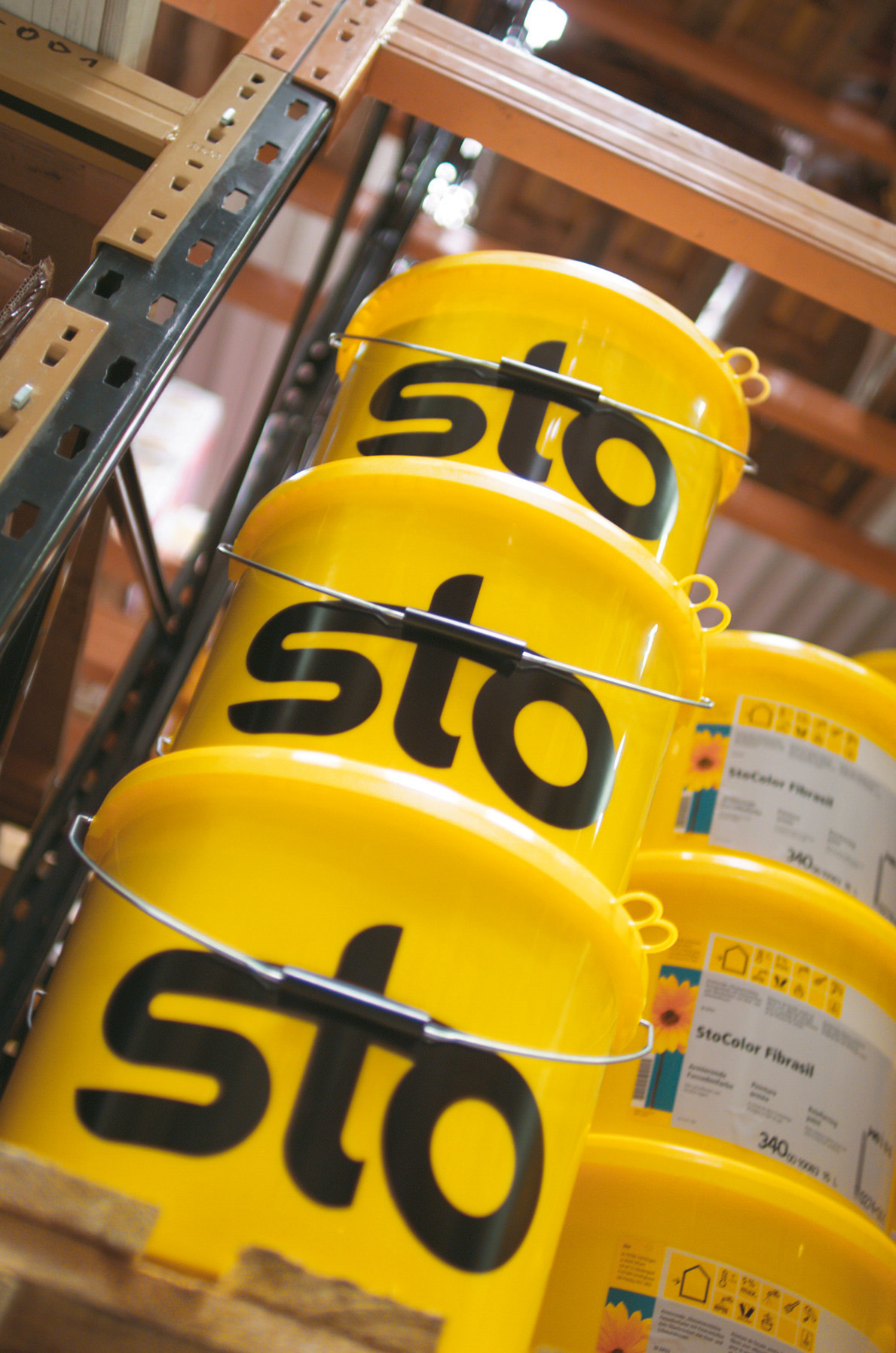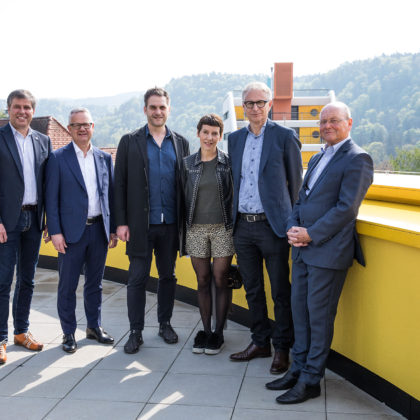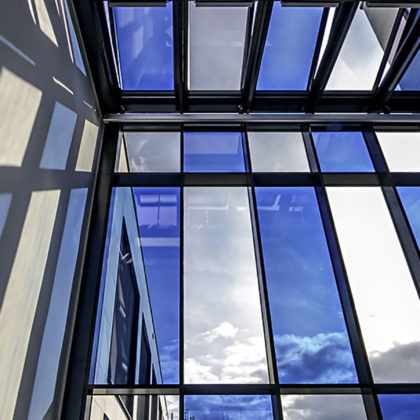StoColor Dryonic provides long-term moisture protection for all kinds of building materials
Although outdoor building materials may vary greatly – from render and concrete to sheet metal – all materials that are constantly exposed to weathering need one thing: long-term moisture protection. There is now a single paint that can provide this protection on virtually all standard substrates: StoColor Dryonic diverts rain and condensation away in a targeted manner thanks to its microtextured surface, ensuring a clean and dry surface without the need for biocidal film protection.
The biomimetic principle of the water-repellent paint is based on microtextures. In contrast to conventional coatings, rain and condensation cannot accumulate on these microtextures. Instead, they are distributed over a large area and quickly diverted. This keeps the facade dry and clean.
The cross cut
The coating, which is produced in a CO2-neutral process, performs this task not only on render, but on special substrates as well. These include powder-coated metal facades as well as fibre cement slabs and gutters made from zinc plate. The coating can also protect Alucobond, rigid PVC, and powder-coated aluminium from moisture. In many cases, the building elements can even be coated without an additional primer – this requires the substrate to be intact. As a precautionary measure, the tradesman should create a test surface before applying the coating in order to check the adhesive strength using a cross cut. The less the coating flakes along the cut edges and at the intersection points of the grid lines, the better the new coating will adhere later on. After this test, the surface can be primed and two coats of StoColor Dryonic can be applied. As soon as the surface is dry, the adhesion is tested again using the cross cut.
Better coverage on the facade
The airless spray process is a particularly efficient way to apply the paint to the facade. This process ensures low overspray and even coatings on load-bearing substrates, and improves surface coverage considerably. If the substrate is made of metal, the best option is a paint nozzle and a delivery pressure of 190 bar. For renders, a double nozzle and 120 bar are sufficient – to make the surface as homogeneous as possible, the freshly applied paint should be rolled over while still wet. To avoid unsightly seams between two scaffolding platforms, you should work with two offset pieces of airless equipment at the same time and take into account the wind direction.
Robust and environmentally friendly
StoColor Dryonic is also suitable for use on external wall insulation systems. The paint meets the very highest requirements when it comes to sustainable construction, e.g. those according to LEED or DGNB. It is also extremely robust: whereas with conventional highly pigmented paints, we must accept the risk of extender material breakdown (as they are easily scuffed), the new coating is much more resistant. This is a huge advantage in busy areas such as entrances, where the coating is exposed to mechanical loads. The secret behind this resistance is a special formulation with functional filler materials.
 |
StoColor Dryonic provides an all-round protective coating for the Imhofhalle in Untermeitingen, Bavaria.
Photo: Martin Baitinger, Böblingen / Sto SE & Co. KGaA
|
||
 |
The new facade paint with a microtextured surface is inspired by the fog-basking beetle.
Photo: Shutterstock, Vladimir Wrangel
|
||
 |
Left: Standard facade paint – water dampens the surface. Right: StoColor Dryonic – water runs off the surface.
Photo: Sto SE & Co. KGaA, Stühlingen
|
||
Publication free of charge, specimen copy requested



